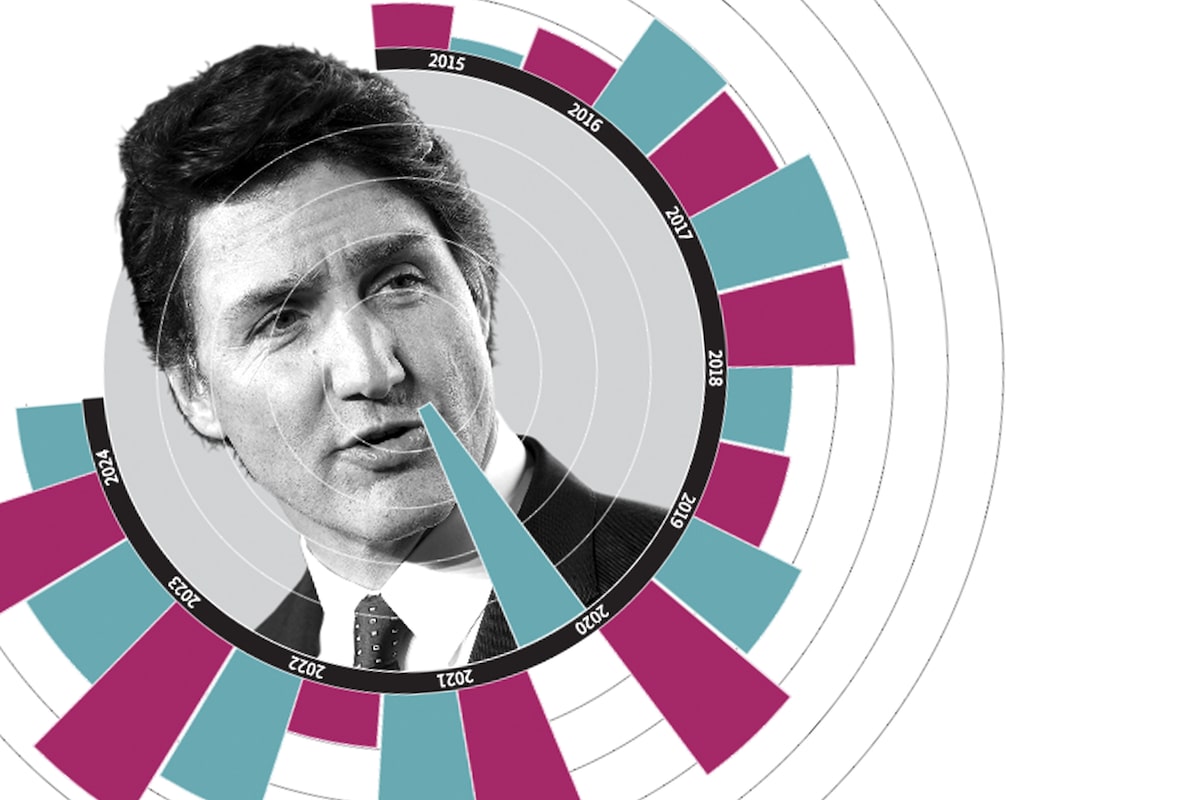Interesting article on growth in public sector jobs over the past decade. What I got from it: lots of people were hired during the pandemic to handle pandemic-related initiatives; aside from that, lots of people were hired in general; governments appear to hire in times of economic uncertainty (e.g. growth under Harper during 2008+); federal unions argue staffing levels are returning to “normal”.
But the killer is the last section where the author tries to figure out if we’re getting value for money. The answer is short and sour: Canadians don’t think so, and internal targets aren’t being met.
Are Canadians getting bang for their taxpayer buck?
… One way to gauge that is through surveys, which doesn’t leave Canada looking good relative to its international peers. The OECD polls residents at its member countries on their satisfaction with public services such as health care and education, and between 2017 and 2022, Canada experienced the largest decline in satisfaction among G7 countries for education (from 73 to 67 per cent) while the drop in health care satisfaction matched that of the United Kingdom, but to the lowest level in the G7 (from 69 to 56 per cent).
… The share of respondents who said their provincial government had done a “good” or “very good” job fell overall from close to half in the first quarter of 2019 to 30 per cent at the end of 2023. Both B.C. and Quebec, two provinces that have seen public-sector job growth rise particularly quickly, registered some of the worst declines.
… the Office of the Parliamentary Budget Officer (PBO) reviewed four years of results reports to see how the government measured up against nearly 3,000 performance targets it had set for itself. The assessments weren’t promising. For fiscal 2021-22, roughly 25 per cent of targets were not met, up from 20 per cent in 2018-19. But that didn’t capture the full scale of the performance shortfall. One-tenth of performance targets included no information on results, while another one-third stated results would be achieved at some point in the future.
Yeah, that mixes provincial services with federal ones.



This is the best summary I could come up with:
By the time throngs of cheering, selfie-snapping bureaucrats mobbed Mr. Trudeau days after he was sworn in as prime minister, it was clear the dynamic between the federal government and its hundreds of thousands of employees was about to shift dramatically after years of acrimony and cuts.
“The government has not ballooned out of control, all that’s happened is the Liberals rehired some of the 45,000 jobs that Stephen Harper cut in four years,” said Chris Aylward, national president of the Public Service Alliance of Canada, the largest federal union.
“The aging of the population is a huge part of this,” said Tammy Schirle, professor of economics at Wilfrid Laurier University, pointing to laborious tasks such as processing applications for CPP and disability benefits, with each file handled by hand.
“There’s been a fundamental change to public management that’s led to an explosion of public-sector employment, and that’s helped make it look like there’s job growth across the broader economy,” said Ben Eisen, senior fellow in fiscal and provincial prosperity studies at the Fraser Institute.
That’s less of a concern now than it was when the job market was extremely tight in 2022 and early 2023, according to Philip Cross, senior fellow at the Macdonald-Laurier Institute, though he notes that throughout the pandemic, and even now, public administration and education have the lowest vacancy rates of all sectors.
“The challenge in a lot of public sector jobs is there is no market for the services they’re providing, and so whether somebody takes two days to write a briefing note or two weeks, it’s still roughly the same output,” said Stephen Tapp, chief economist at the Canadian Chamber of Commerce.
The original article contains 3,352 words, the summary contains 279 words. Saved 92%. I’m a bot and I’m open source!